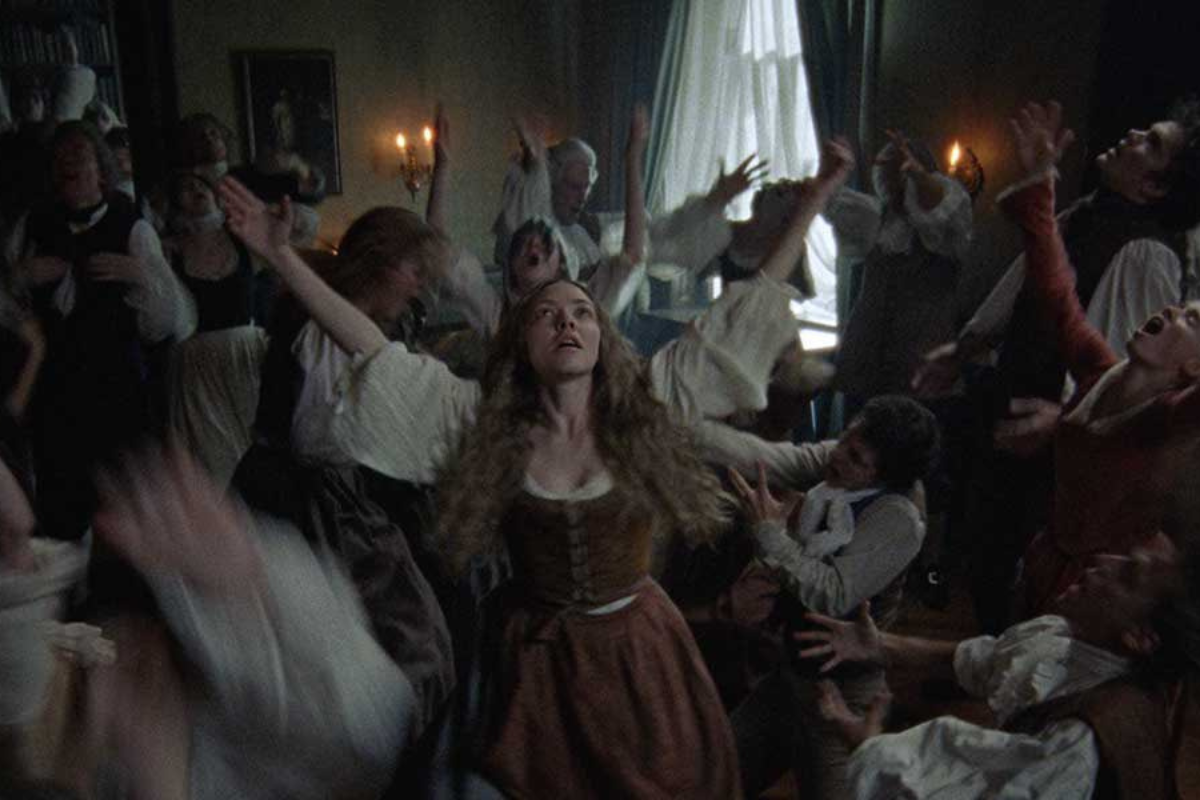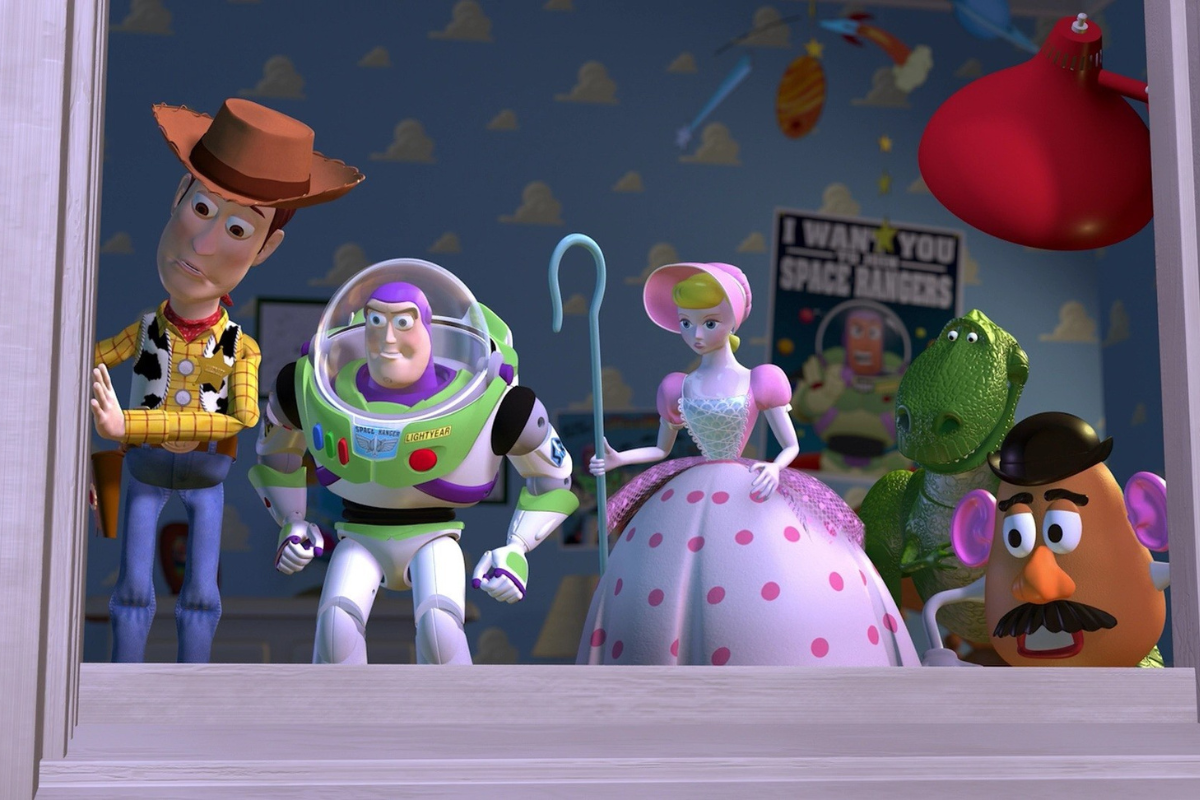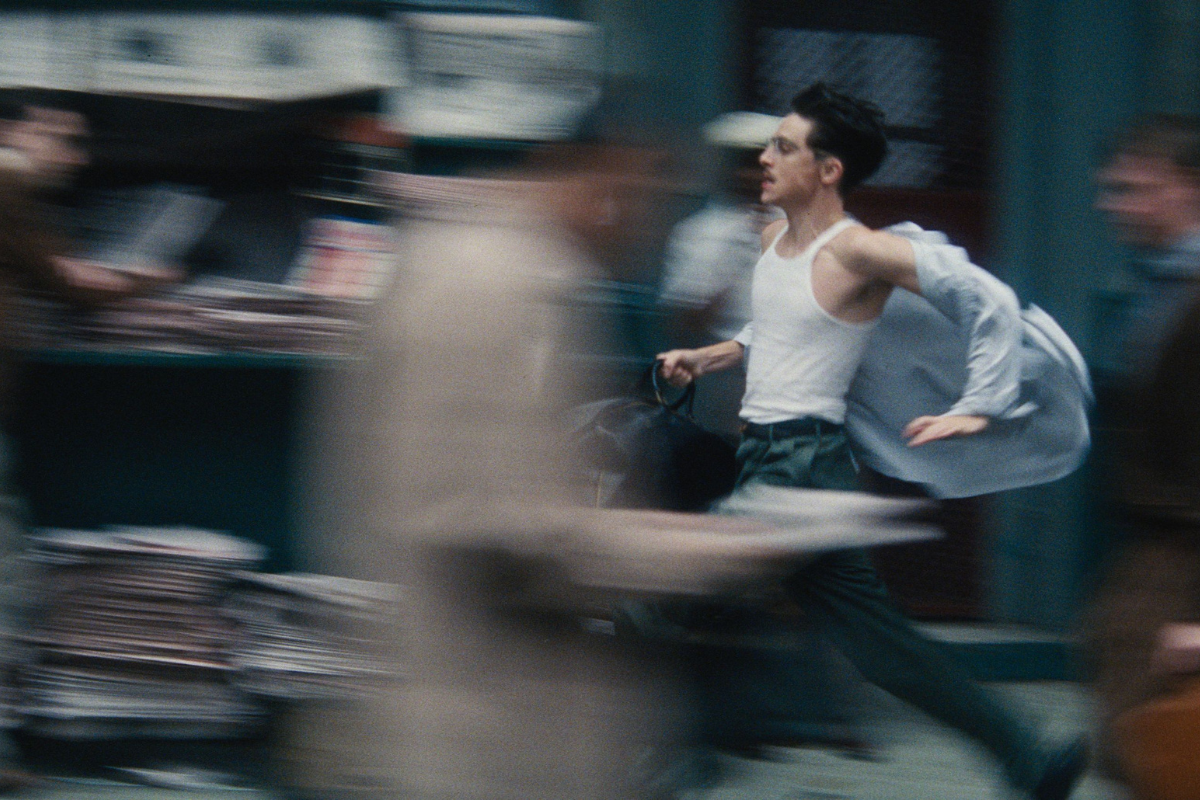UNDERSTANDING SCREENWRITING: Two Notes, Three Disappointments, and Two Appreciations
Tom Stempel analyzes The Other Side of the Wind, Widows, The Favourite, pointing out disappointments, but also shares some fun tidbits about two great screenwriters who passed in 2018, William Goldman and Gloria Katz.
Tom Stempel analyzes The Other Side of the Wind, Widows, The Favourite, pointing out disappointments, but also shares some fun tidbits about two great screenwriters who passed in 2018, William Goldman and Gloria Katz.
A Short Note.
In the last column, I had an item about The Old Man and the Gun in which I mentioned that the trailer for the film had a lot of the first scene between Robert Redford and Sissy Spacek. Our beloved editor, Jeanne Veillette Bowerman, inserted what turned out to be a later trailer for the film that did not have as much of that scene in it. That may explain your confusion in looking at the trailer after you read the item.
A Longer Note.
In 1988 I wrote the first edition of my book FrameWork: A History of Screenwriting in the American Film. The second edition came out in 1991 and the third in 2000. A couple of years ago I suggested to the publisher we do a 30th anniversary 4th edition. The editor and the reader loved it, but the production staff felt it would be too expensive to print and would need to have such a high price that could not get enough people to buy. The editorial board passed on it. Typical Hollywood story: the creatives loved it, the suits didn’t.
One of my mantras for working in any creative area is: if they, whoever they are, won’t let you do this, do that. So I took the project to the online Canadian journal Offscreen, which I have written for before. The editor, Donato Totatro, said “Of course we’ll run it.”
The three new parts deal with the history of American screenwriting from 2000 to 2018, and they are now posted here. Part I deals with writers of small films, such as John Sayles, Woody Allen, Richard Linklater, Sofia Coppola, Diablo Cody and others. Part II deals with the writers of big films, such as Quentin Tarantino, Christopher Nolan, Judd Apatow, Nora Ephron and others. Part III deals with the return of the studio system, focusing on writing at Disney, Pixar, Lucasfilm, DC, and the Marvel Cinematic Universe. Enjoy.
Oja Kodar is no Herman Mankiewicz.
The Other Side of the Wind (2018. Written by Oja Kodar, Orson Welles. 122 minutes)
If you have been reading anything about movies this year, you probably came across something about The Other Side of the Wind. The current Winter issue of Cineaste has a story on the film and its companion documentary They’ll Love Me When I’m Dead, plus interviews with director Peter Bogdanovich , who acts in the film, and producer Frank Marshall, who worked on the film while it was in production from 1970 to 1976, and were very involved in the difficulty post-production phase.
The British film magazine Sight & Sound has in its November issue an article on the making of the film by film historian Joseph McBride. McBride was a young critic who had written one book on Welles (by now he has done three) and Welles talked him into playing the role of a nerdy film critic in the film. (McBride captures the nerd quality, but has no cinematic presence; he was smart to go back to his day job, which has led him to write such books as his great, devastating biography Frank Capra: the Catastrophe of Success.) McBride’s third Welles book, the 2006 Whatever Happened to Orson Welles?, about the last years of Welles’s life also has a lot of material on the film.
Given Welles’s well-deserved reputation as a genius, it is not surprising that the film’s Rotten Tomatoes rating is 81%. However, if you look at the actual reviews, you may begin to suspect the truth about the film.
It is a mess.
The problem is the script. At least partly the script, since Welles allowed a lot of improvising. But let’s start with the script. The credits on the film give first screenplay credit to Oja Kodar, Welles’s girl friend at the time. She also plays The Actress in the film within the film, also called The Other Side of the Wind. I don’t know if she is responsible for the script for the film within a film, but it is a mess as well as the script for the whole film.
The story of the whole film is about an established Hollywood director Jake Hannaford, a macho Howard Hawks-John Ford type. Jake is trying to make an art film to keep up with the younger directors of the late 60s-early 70s, several of whom, like Dennis Hopper, make brief appearances in the film. Looking at the footage of the film-within-a film, I think Welles is trying to parody Antonioni’s 1969 disaster Zabriskie Point. Like Zabriskie Point, Jake’s film focuses on a blank–faced young couple who wander pointlessly around the desert, a lot of the time without their clothes on. A lot of what the critics said at the time about Zabriskie Point could be said about both versions of Wind. Pauline Kael, later Welles’s bête noir, wrote “A huge, jerry-built, crumbling ruin of a movie.” Joseph Morgenstern wrote “A small, sad shambles of a film that has obviously been salvaged from a larger shambles.”
Part of the problem with the film-within-a-film is that Welles spends a lot of time focused on Kodar as the actress and her nude bottom. Kodar is good to look at, but she is not very interesting to watch, since she has been directed to be completely unexpressive. The man is played by Robert Random, who has also been directed to play his role without expression. In Kodar’s case, the lack of expression may just be her default setting, but Random was a much livelier actor, as when he was playing the juvenile lead in the sixties TV series The Iron Horse.
The story of the main part of Wind is, I think, supposed to be about Jake trying to raise money for the completion of the film. So he throws a party to show the footage and edited sections he already has. But the guy who might provide the money is not there, and we get mostly the party activities. Unfortunately there is no focus, and we just get bits and pieces, some of which may have at one time connected to material in the rest of the film.
Welles shot about 100 hours of footage, and the picture runs just over two hours. That 50-1 shooting ratio is not that unusual, but if a lot of that additional material is the improvised stuff, you can see the problem Welles had. He had done some cutting and assembling and left notes on the rest of what he wanted to do. The editor on the film is Bob Murawski, who won an Oscar as the co-editor of The Hurt Locker (2010) and has worked on many documentaries.
Hmm, a film about a director and the difficulties he is having on the picture he is working on. Sounds to me as though Welles may have been influenced by Fellini, both his La DolceVita (1960) and 8 1/2 (1963), but his and Kodar’s script never pull things together as Fellini and his co-writers do. This is particularly true in the lack of focus on the characters. Jake Hannaford is supposed to be this legendary director, but the script does not give John Huston enough detail to create a real person. Compare that with Robert Towne’s script for Chinatown (1974) Huston acted in while Wind was in production. Towne has made Noah Cross about as vivid a character as we have ever seen in films. Look at any of his scenes in there and compare them with the bits and pieces in Wind.
There are two kinds of film scholars: the Wellesians and the Mankiewiczians. Needless to say, I am a Mankiewicizian, since I go along with Pauline Kael, who in her famous “Raising Kane” essay made a convincing case that a lot of what is good about the Citizen Kane (1941) script came from Welles’s co-writer Herman J. Mankiewicz. As you can imagine, the Wellesians were appalled by Kael’s article. (There have been rumors that Julie Rich, the film critic character in Wind is based on Kael, but she is not a thing like Kael. She appears to be more of an historian than a critic and she is beautifully played by Susan Strasberg.)
At the risk of my Wellesian friends (yes, I still have a few) never speaking to me again, Welles really needed a co-writer like Mankieiwcz here instead of Kodar.
Another Disappointment.
Widows (2018. Screenplay by Gillian Flynn & Steve McQueen, based on the 1983 British miniseries written by Lynda La Plante. 129 minutes)
This new theatrical version of Widows is also a disappointment. With the major league talent involved you can see why it has been highly anticipated. The original miniseries was the second writing job by La Plante. She was an actress who got tired of playing girlfriends and hookers and decided to write some great parts for several actresses. Four women whose husbands are killed in an attempted heist get together to try their own robbery to make ends meet. The first series led to a second one, then a Canadian remake in 2002.
Steve McQueen, who also directed the new version, saw the first version when he was thirteen and loved it. A few years ago he ran into La Plante in Buckingham Palace (“as you do” McQueen said in the story on the film in the November Sight & Sound) and they discussed the series. She had sold the rights to Disney and McQueen got ahold of the rights.
For his writing partner on the project, he got Gillian Flynn, best known as the writer of the novel and 2014 film Gone Girl. And for the cast they got Viola Davis, Michelle Rodriquez, Elizabeth Debicki (The Night Manager [2016]), and Cynthia Erivo (Step [2017]).
So what went wrong?
By now you know when I ask that question, the answer is nearly always: the script.
McQueen and Flynn have transferred the original setting from London to Chicago, which is not necessarily a problem. In the miniseries, the focus was on the widows and the cops. Here it is on the women and the local politicians/crooks—this is Chicago, after all. No cops in sight. But while the scenes with the politicians are often good as scenes (look for one late in the film between Colin Farrell and Robert Duvall) they take the focus away from the women.
The biggest problem is that the women are not, with one exception, given much characterization. The great Viola Davis has one-and-a-half notes to play. Rodriquez only has one, as does Erivo. Several reviews have pointed out that Debicki gives the best performance, which she does, and it’s because the writing gives her a lot to do. We see more emotional change in her character in the scenes she is given.
Now if McQueen and Flynn had just done that for the others…
And Yet Another Disappointment.
The Favourite (2018. Written by Deborah David and Tony McNamara.119 minutes)
Widows is not the only film out now loaded with female acting talent. This one has Olivia Coleman, Rachel Weitz, and Emma Stone.
You know the question and you know the answer.
It is 18th Century England and Queen Anne (Coleman) is running the country with the help of her lady-in-waiting Lady Sarah (Weitz). A lot of help, since the Queen is a flake and a half, not helped by her medical problems, including the worst case of gout I’ve heard of. Fortunately, Sarah is smarter than everybody else around, although she has trouble convincing the men in her political world of it.
Then Lady Sarah’s country cousin Abigail (Stone) shows up. Sarah’s not happy and sends her to work downstairs. Way downstairs. But Abigail has some of the family’s smarts (well, the family surname is Churchill). So, we see what Abigail has in mind.
For the rest of the film we watch it play out exactly as we have guessed from very early in the film. Both Weitz and Stone are essentially given one note to play, and it is a similar note: smarter than the others. There is only so much they can do with what the script gives them. Some reviews have suggested it is an 18th Century All About Eve, but Joseph Mankiewicz is much smarter about developing characters. Whereas here we know from the beginning what Abigail is up to, pay attention the next time you watch Eve and figure out exactly when you know Eve is a bitch.
At least Coleman is given a lot of flamboyant suffering to have fun with, which she does. That may be enough for you, but toward the end of the film I began to doze off.
William Goldman (1931-2018): An Appreciation.
William Goldman, who died on November 16th, was one of the best screenwriters of the second half of the twentieth century and he was certainly the best known. He won Academy Awards for Butch Cassidy and The Sundance Kid (1969) and All the President’s Men (1976), although he later noted that on the latter several other people diddled with the script as it was being filmed.
Some of his other films included Harper (1966—his first big hit, on which his producer Elliott Kastner told him, “You just jumped past all the shit,” which Goldman took to mean “I was no longer a putz novelist from New York. Now I was a putz novelist who wrote a Paul Newman movie”), Marathon Man (1976—which he adapted from his own novel; The novel and film did for dentists what Jaws [1975] did for sharks), and The Princess Bride (1987—also adapted by him from his novel).
In this column I occasionally review older movies and you can read my take on All the President’s Menhere and my take on A Bridge Too Far (1976) here.
The reason I said he was the best known screenwriter of his time is that in addition to his scripts, he also wrote in a wildly entertaining way about movies. His 1983 book Adventures in the Screen Trade is absolutely required reading for anybody even thinking about becoming a screenwriter inHollywood. He takes you through the process of writing several of his classic films. The follow-up, the 2000 book Which Lie Did I Tell?, is not quite as good, since his career took a downturn after the first book, for reasons he gets into in the second one. But if you ever intend to adapt a big, complicated novel for the screen, read the chapter in Lie on his work on Absolute Power (1997).
Goldman also borrowed from older movies, but he did it a lot more discreetly than many filmmakers. In a column item on the 1948 western Black Bart you can read here you will see where he got the idea for the end of Butch and Sundance. Read to the end of the item to see Charlie Chaplin’s, Rene Clairé’s, Nunnally Johnson’s and my run-in with Goldman.
Gloria Katz (1942-2018): An Appreciation.
Gloria Katz, who died on November 25th, was not as successful a screenwriter as William Goldman, and she was certainly not as well known. But she made major contributions to two of the most popular and influential films of the seventies.
Katz did her graduate work in film at UCLA, but married Willard Huyck, who did his at USC. They met George Lucas in their film school days. Lucas wrote the treatment and first drafts of the screenplay for what became American Graffiti (1973). His drafts were primarily about cars. George Byron Sage, a reader at 20th Century-Fox, wrote of one of those drafts, “There’s nothing to make you feel these characters could be interesting enough to demand such prolonged attention from a general feature audience.” The underage Carol does not appear in this script, and Debbie and Laurie have much smaller roles than they do in the film.
Lucas got Huyck and Katz to do a new draft. He later admitted, “They (the characters) were cardboard cutouts in my script, nonpeople. Bill and Gloria made it one hundred percent better with a combination of wit, charm, snappy one-liners and punched-up characters.”
When Lucas wrote the first Star Wars film (1977), he asked the couple to help spruce up the script, and Katz made a particular point of making Leia a little livelier than Lucas had made her.
The couple later wrote Indiana Jones and the Temple of Doom (1984), but the scene where the singer Willie Scott is screaming in the jungle and Indy complains women are two noisy was written not by the Huycks, but by Steven Spielberg.
The Nitty Gritty of Spec Scripts: Writing Strong Action and Dialogue
This one-week, intensive workshop focuses on the specifics of writing compelling action (description) and dialogue. At the end of this course, your expert instructor, Dave Trottier, will evaluate five pages of your spec script.
REGISTER NOW!
Scriptmag.com is a participant in the Amazon Services LLC Associates Program, an affiliate advertising program designed to provide a means for sites to earn advertising fees by advertising and linking to Amazon.com and affiliated websites.
Tom Stempel is a Professor Emeritus at Los Angeles City College, where he taught film history and screenwriting from 1971 to 2011. He has written six books on film, five of them about screen and television writing. You can learn more about his books here. His 2008 book Understanding Screenwriting: Learning from Good, Not-Quite-So- Good, and Bad Screenplays evolved into this column. The column first appeared in 2008 at the blog The House Next Door, then at Slant, and then Creative Screenwriting before it found its forever home at Script.
In the column he reviews movies and television from the standpoint of screenwriting. He looks at new movies, old movies, and television movies and shows, as well as writing occasional other items, such as appreciations of screenwriters who have passed away, plays based on films, books on screenwriting and screenwriters, and other sundries.
In September 2023 Tom Stempel was awarded the inaugural Lifetime Achievement in the Service of Screenwriting Research by the international organization the Screenwriting Research Network.







